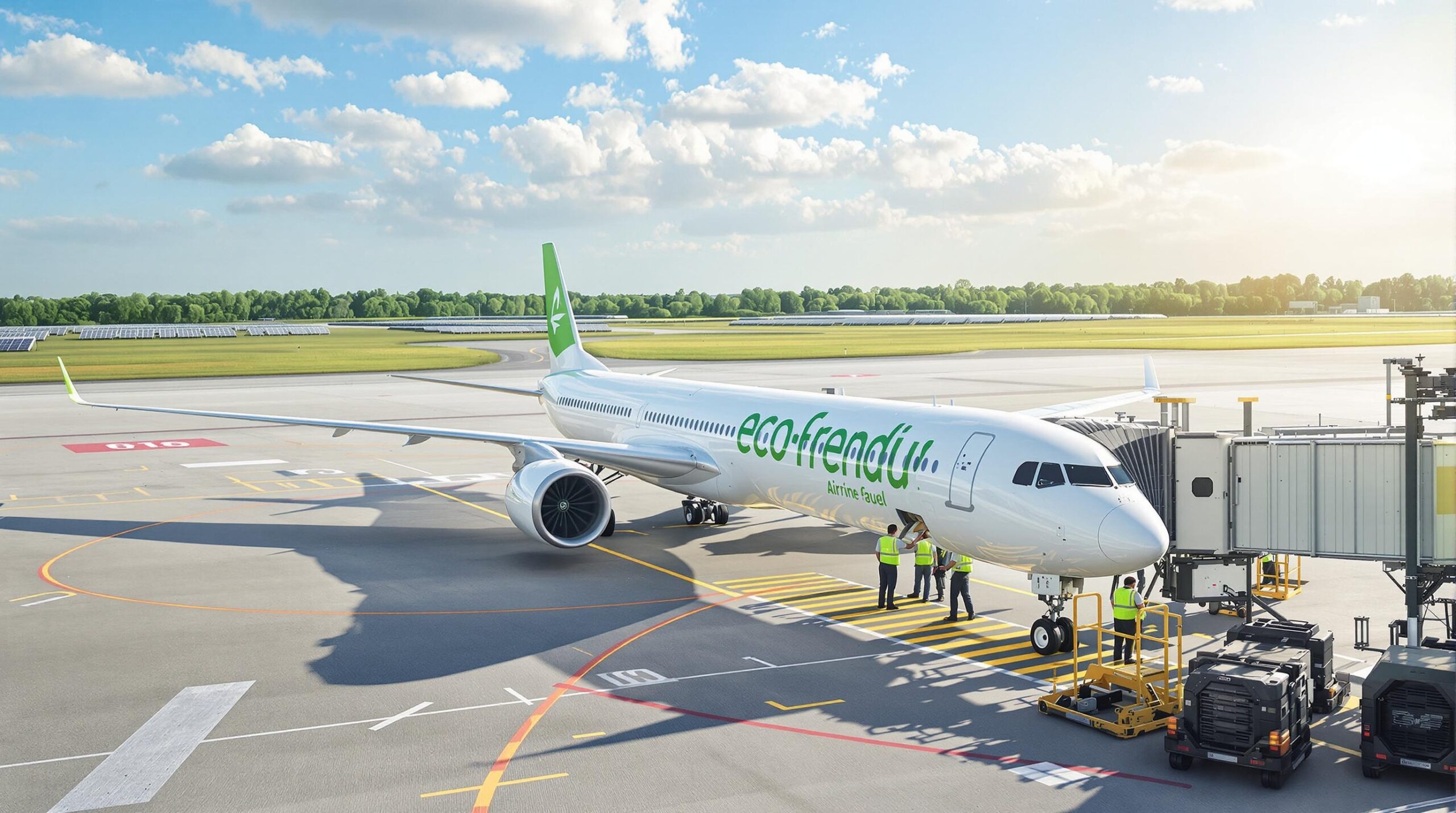Air travel’s environmental impact draws growing concern as global passenger demand rises. Aviation alone accounts for about 2-3% of global carbon dioxide emissions. Traditionally, jet fuel is refined from fossil sources, releasing significant greenhouse gases. Many experts call for greener solutions to make future flying sustainable. Sustainable aviation fuel, commonly known as SAF, now emerges as a promising innovation and a central part of aviation’s decarbonization efforts.
What Are Sustainable Aviation Fuels?
Sustainable aviation fuels are non-fossil alternatives created from renewable or waste resources. These include biomass, used cooking oil, municipal waste, and even algae. Unlike conventional jet fuel, SAF offers a smaller carbon footprint throughout its lifecycle. Its use achieves this by capturing atmospheric carbon during the growth of raw materials, which offsets the emissions generated from burning the fuel. Such fuels integrate directly into today’s aircraft engines and existing airport fueling systems.
The Recent Breakthrough: New Production Techniques
One of the main obstacles to SAF adoption has been high production costs. Recent scientific breakthroughs have changed this outlook. Researchers developed innovative methods that unlock new feedstocks previously considered unsuitable for fuel conversion. For example, one technique efficiently processes agricultural residues and household organic waste into valuable fuel. This new approach significantly improves yields and lowers the price point.
Another milestone is the use of advanced synthetic biology. Scientists engineered microbes that convert plant sugars into hydrocarbons nearly identical to those found in traditional kerosene. Such microbes work at lower energy requirements and produce fewer byproducts. These developments accelerate commercial viability and promise larger-scale SAF availability.
Environmental Benefits of Sustainable Aviation Fuels
Using SAF reduces lifecycle greenhouse gas emissions by up to 80% compared to fossil-based jet fuels. By closing the carbon loop, these fuels actively contribute to climate change mitigation. Additionally, SAFs often burn cleaner, leading to less particulate matter and fewer sulfur emissions. Airports adopting sustainable fuels see improved air quality for passengers, staff, and surrounding communities.
Another key benefit is minimized impact on water use and biodiversity, especially when waste products serve as feedstocks. Unlike traditional crop-based biofuels, these inputs do not compete with food production or require new agricultural land. Their sustainability criteria drive responsible sourcing and continual environmental review.
Challenges to Large-Scale Implementation
While the recent breakthrough boosts optimism, barriers to widespread adoption remain. Production capacity must scale rapidly to meet rising airline demand. Building new refineries or converting existing facilities takes years and major capital investment. Policymakers and industry players continue to debate how financial incentives can best support this growth.
Another hurdle involves securing enough sustainable feedstock without exhausting existing supplies. Global logistics chains will need adaptation to gather, process, and transport large amounts of waste or biomass. Achieving real emissions savings requires strict monitoring of fuel origin and quality along the entire supply chain.
Global Industry Adoption and Key Partnerships
Several major airlines already use SAF blends on commercial flights. Notably, carriers like United Airlines, KLM, and Lufthansa run pilots and long-haul operations with these fuels. Aircraft engine makers, including Boeing and Airbus, have successfully tested SAF at up to 100% blend in engines. Their ongoing research reassures customers about safety and performance.
Strategic partnerships underpin these advances. Fuel producers team up with municipal governments, refinery operators, and global environmental groups. Joint ventures often secure reliable access to sustainable feedstocks. Such cooperation helps streamline certification processes, ensuring SAFs meet strict technical and sustainability standards.
Policy Support and Regulatory Frameworks
Governments worldwide are now crafting regulations to encourage sustainable aviation practices. The European Union set mandates requiring airlines to use minimum SAF percentages by 2030. The United States, Japan, and Singapore have launched tax incentives and public investments to bolster SAF infrastructure. Policy alignment at the global level remains crucial to avoid market fragmentation.
Airline coalitions and international bodies like the International Civil Aviation Organization (ICAO) work toward harmonized emission reduction goals. The Carbon Offsetting and Reduction Scheme for International Aviation (CORSIA) incentivizes greener options and offsets emissions through alternative fuel credits.
The Future of Greener Air Travel
As research breakthroughs lower costs and refine technology, experts expect widespread SAF deployment within the next decade. Analysts project that by 2050, SAFs could deliver up to 65% of aviation’s carbon reduction target. These fuels bridge the gap until next-generation aircraft, like electric planes or hydrogen-powered jets, mature and reach the market.
Consumer awareness and corporate responsibility will also influence adoption rates. Many business travelers and companies now seek flights with reduced environmental impacts. Airlines publishing transparent fuel usage and emission data help customers make informed choices and encourage industry-wide progress.
Conclusion: Toward Sustainable Flight
The aviation sector faces strong pressure to decarbonize as climate action accelerates. Sustainable aviation fuel breakthroughs offer the most immediate hope for green air travel. These innovations allow airlines to cut emissions without major fleet changes. The latest production methods and new feedstocks bring costs closer to parity with conventional fuels.
Policymakers, industry leaders, researchers, and passengers all play roles in this transition. Successful large-scale adoption will require determined collaboration and ongoing investment. Ultimately, sustainable aviation fuels give hope to travelers wanting a cleaner sky without sacrificing the convenience and connection afforded by flight.

